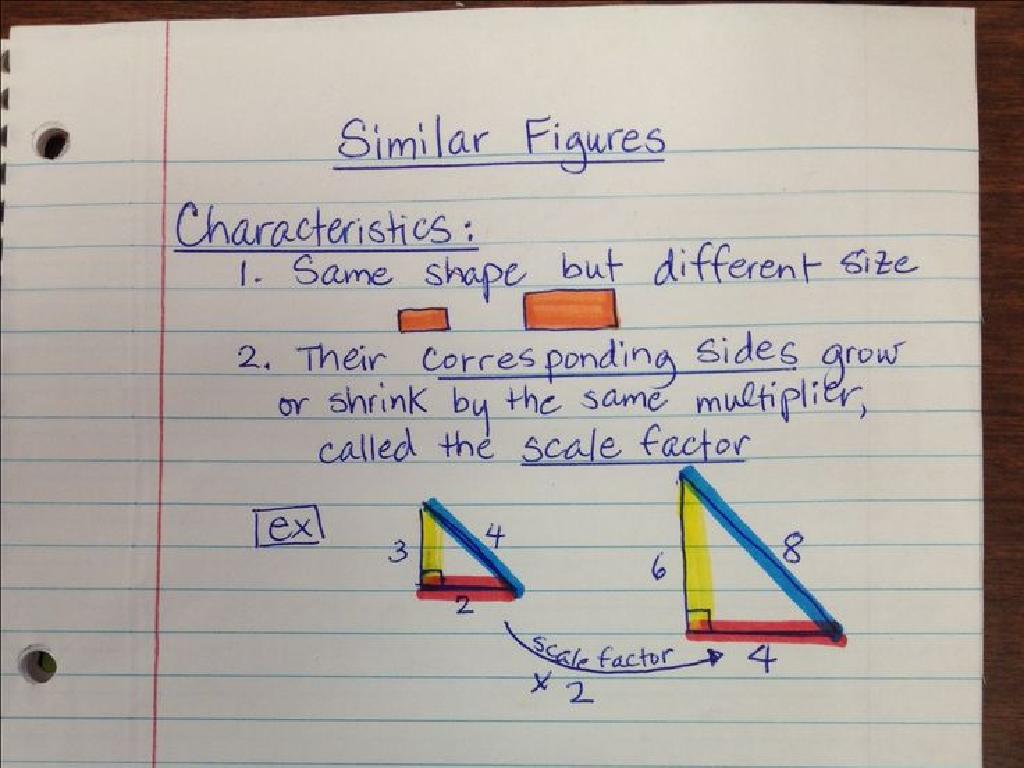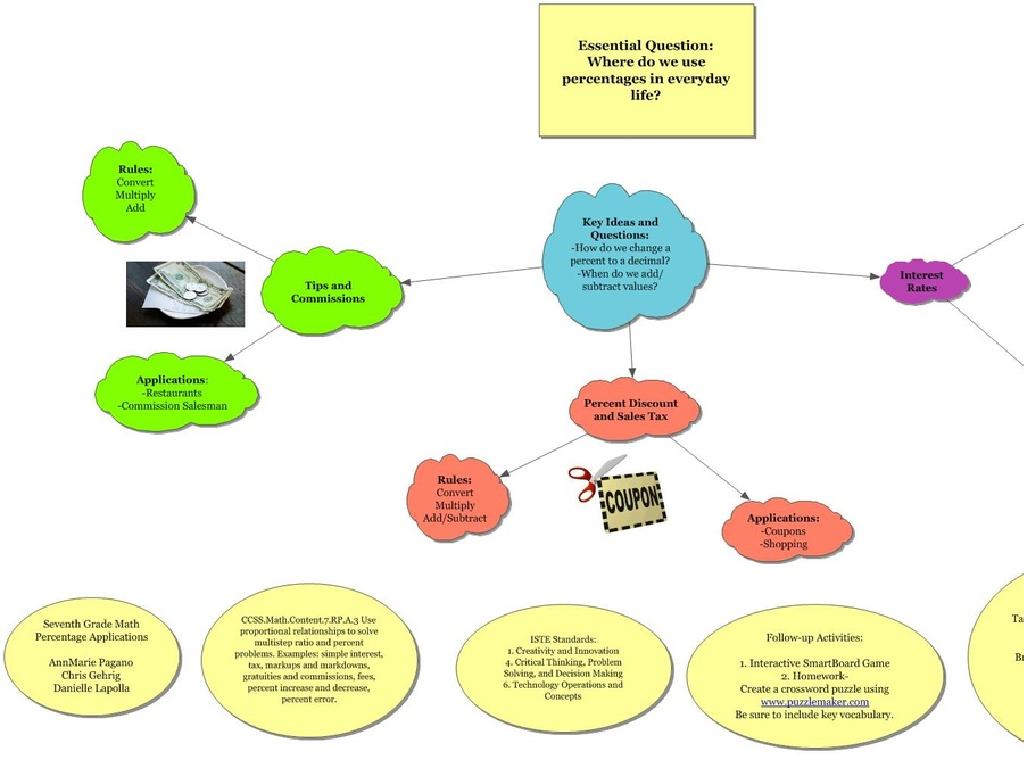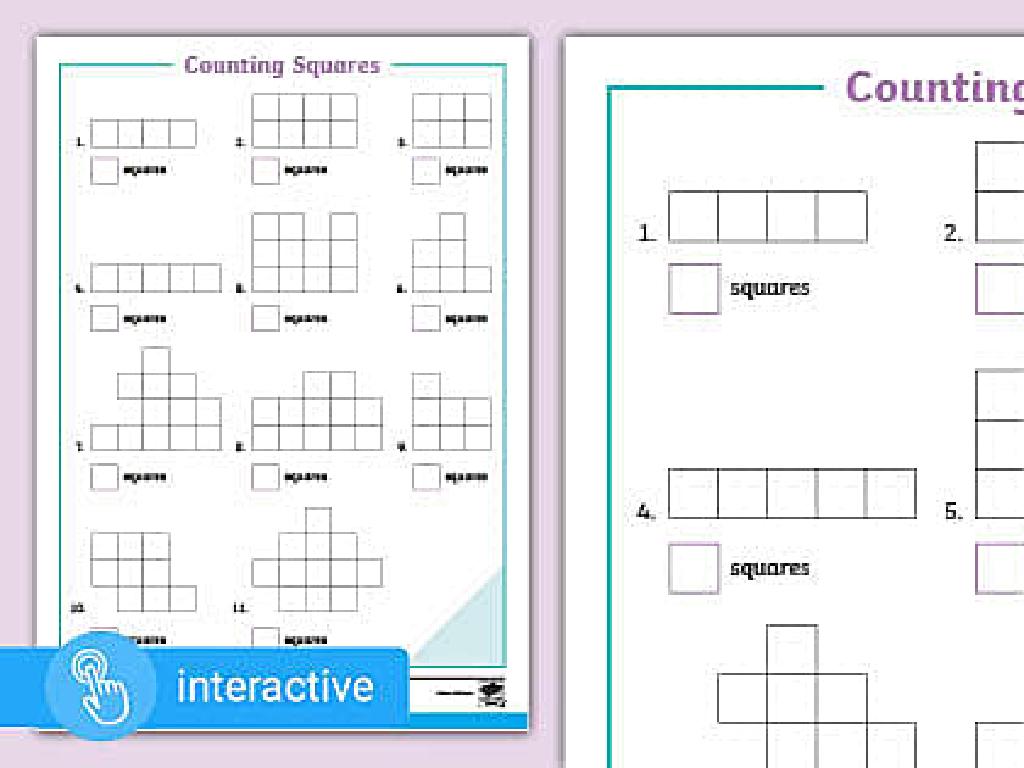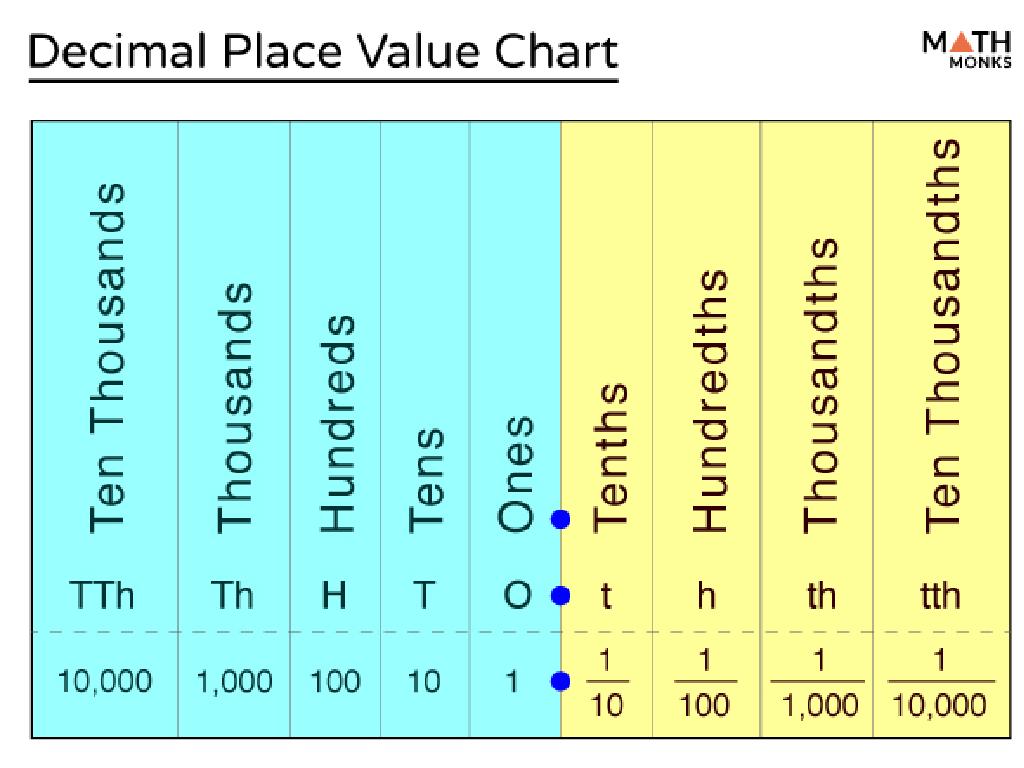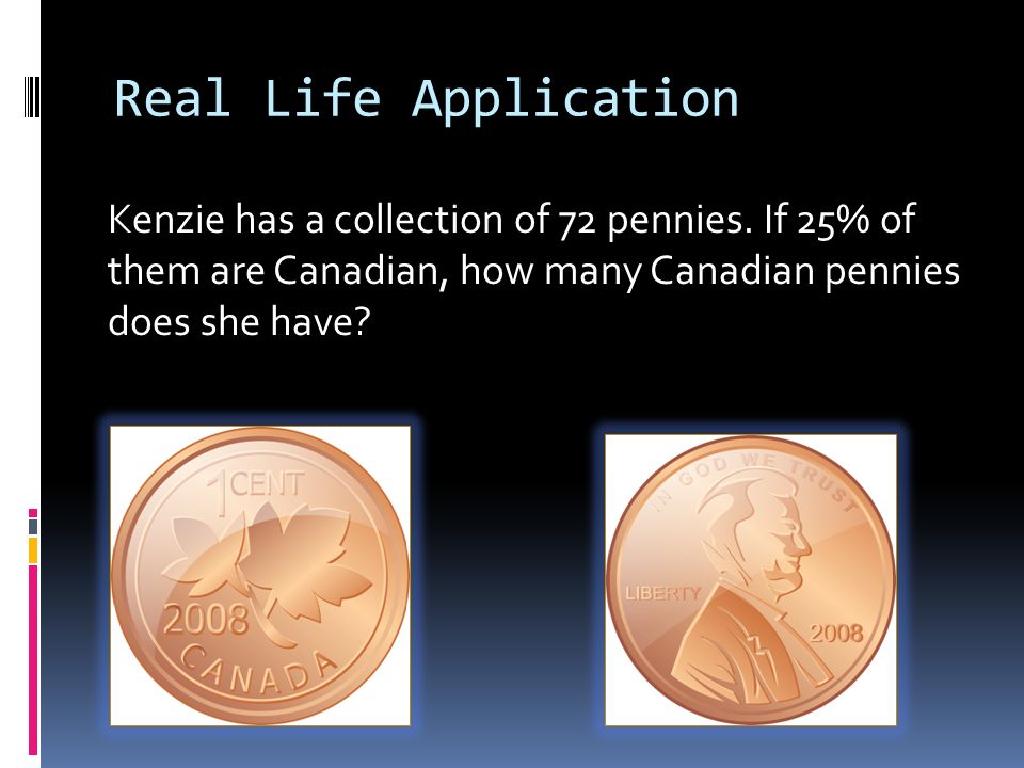Compare Physical And Chemical Changes
Subject: Science
Grade: Fifth grade
Topic: Physical And Chemical Change
Please LOG IN to download the presentation. Access is available to registered users only.
View More Content
Welcome to Physical and Chemical Changes!
– Matter makes up everything
– Exploring changes in matter
– Physical vs. Chemical changes
– Physical changes don’t make new substances; chemical changes do.
– Learning to differentiate them
– Examples: Melting ice (physical) vs. rusting iron (chemical)
|
This slide introduces the concept of matter and the ways it can change. Matter is the substance that makes up all things in the universe. Today, we’ll embark on an adventure to explore how matter can change in different ways. The objective is to help students understand the difference between physical changes, which do not create new substances (like melting ice or tearing paper), and chemical changes, which result in new substances being formed (like rusting iron or baking a cake). Encourage students to think of examples from their daily lives and discuss whether they are physical or chemical changes. This will set the foundation for more in-depth exploration of the topic in subsequent lessons.
Understanding Matter and Its States
– Matter: Everything around us
– States of matter: solid, liquid, gas
– Water can be ice (solid), liquid, or steam (gas)
– Matter changes states
– Freezing, melting, boiling are state changes
– Examples of state changes
– Ice melting, water boiling
|
This slide introduces the concept of matter and its different states, which is fundamental to understanding physical and chemical changes. Matter is anything that has mass and takes up space, and it can be observed in three primary states: solid, liquid, and gas. Emphasize that these states can change from one to another through physical processes such as freezing, melting, and boiling. Use relatable examples like water changing from ice to liquid to steam to illustrate these concepts. Encourage students to think of other examples of matter changing states in their daily lives and to consider the energy changes involved in these processes.
Physical Changes in Matter
– Physical changes alter form
– Changes shape or state but not what it’s made of
– Examples: ice melting, paper tearing
– Water becomes liquid; paper becomes smaller pieces
– Dissolving sugar in water
– Sugar mixes with water but can be separated
– Substance identity remains
|
This slide introduces the concept of physical changes to students, emphasizing that these changes affect the form of a substance but not its fundamental identity. Use everyday examples to illustrate this point, such as ice melting into water, tearing paper into smaller pieces, and sugar dissolving in water. Explain that in each case, the original material is still present and has not become a different substance. Encourage students to think of other examples of physical changes and discuss how the original material can often be recovered, such as freezing melted water to get ice again.
Exploring Chemical Changes
– Chemical changes make new substances
– When substances react and form something completely different
– Examples: rust, cakes, fizzing reactions
– Iron turns to rust; ingredients turn into cake; vinegar and baking soda fizz up
– Signs of chemical changes
– Look for color shifts, heat or cold, or bubbles forming
– Chemical vs. Physical changes
|
This slide aims to help students understand the concept of chemical changes, which result in the formation of new substances with different properties from the original materials. Use everyday examples like rusting iron, baking a cake, and the classic vinegar and baking soda reaction to illustrate these changes. Discuss the indicators that a chemical change has occurred, such as a change in color, temperature, or the production of gas. Compare these to physical changes where the substance itself doesn’t change. Encourage students to think of other examples and to observe changes in their environment to determine if they are physical or chemical.
Comparing Physical and Chemical Changes
– Physical change characteristics
– Reversible, no new substances
– Chemical change characteristics
– Usually irreversible, new substances
– Examples of physical change
– Tearing paper, melting ice
– Examples of chemical change
– Burning wood, rusting iron
|
This slide aims to help students differentiate between physical and chemical changes. A physical change is a type of change where the form of matter is altered but one substance is not transformed into another, such as tearing paper or melting ice. These changes are generally reversible. On the other hand, a chemical change results in the formation of one or more new substances, and this process is usually irreversible, such as burning wood or rusting iron. Encourage students to think of more examples and discuss why each example fits into physical or chemical change. This will deepen their understanding of the concepts and help them recognize these changes in the world around them.
Let’s Experiment: Physical vs. Chemical Changes
– Experiment 1: Freezing water
– Observe water change state from liquid to solid
– Experiment 2: Vinegar and baking soda
– Watch for bubbles and new substances forming
– Make predictions for each
– Observe and record changes
|
This slide introduces an interactive class activity where students will conduct two experiments to observe physical and chemical changes. The first experiment involves freezing water to see a physical change as it changes state from liquid to solid. The second experiment is mixing vinegar with baking soda, which will result in a chemical change, evident by the formation of bubbles and a new substance. Encourage students to predict the outcomes of each experiment before starting. Provide detailed guidelines for the teacher: ensure safety measures are in place, explain the steps clearly, and prepare materials in advance. Possible variations of the activity could include using different substances to observe a variety of chemical reactions or comparing the freezing of different liquids. The goal is to help students understand the differences between physical and chemical changes through direct observation and hands-on learning.
Observations and Conclusions: Physical vs. Chemical Changes
– Record observations from experiments
– Discuss physical vs. chemical changes
– Physical change: shape, state, or size alters. Chemical change: new substances form.
– Conclude how to differentiate them
– Clues: physical changes are usually reversible, chemical changes often produce new materials.
– Share findings with the class
|
Students will use their observation skills to record what they see during the experiments. They should note changes in color, temperature, formation of a gas, or a new substance. Discuss as a class which observations might indicate a physical change, such as melting ice, and which suggest a chemical change, like rusting iron. Conclude by reinforcing that physical changes can often be undone, while chemical changes result in new substances that can’t easily revert to the original materials. Encourage students to use these clues to identify the type of change in future experiments and share their findings to enhance peer learning.
Class Activity: Change Detectives
– Work in groups to find everyday changes
– Decide if each is physical or chemical
– Look for new substance evidence
– Bubbles, color change, or temperature shift might indicate a chemical change
– Present findings to the class
|
This activity is designed to engage students in a hands-on learning experience where they act as detectives to observe and categorize changes they encounter every day. Divide the class into small groups and assign them the task of identifying whether the changes they observe in various scenarios are physical or chemical. Provide guidance on evidence that may indicate a chemical change, such as the formation of a new substance, color changes, gas production (bubbles), or temperature changes. After the investigation, each group will present their findings to the class, explaining their reasoning. Possible activities: observing a rusting nail, mixing vinegar and baking soda, melting ice, and dissolving salt in water. Encourage students to discuss and debate their observations to deepen their understanding of the concepts.
Review and Reflect: Physical vs. Chemical Changes
– Take a quick quiz on changes
– Reflect on their importance
– Understanding these helps us know how substances interact and transform.
– Homework: Find changes at home
– Look for a physical change like melting ice and a chemical change like rusting iron.
– Describe each example you find
– Explain what you observed and why it’s a physical or chemical change.
|
This slide aims to consolidate the students’ knowledge through a quick quiz, reflection, and practical homework assignment. The quiz will assess their understanding of the differences between physical and chemical changes. Encourage students to think about the relevance of these concepts in everyday life during the reflection. For homework, students should identify and describe one example of each type of change in their home environment, such as ice melting (physical) or food spoiling (chemical). This will help them apply their knowledge practically and recognize these changes in the world around them. Provide guidance on how to observe and describe the changes, emphasizing the signs of each type of change.

